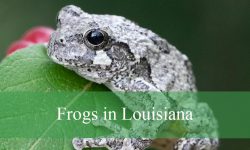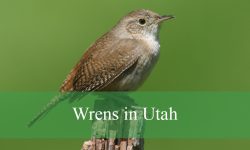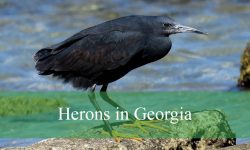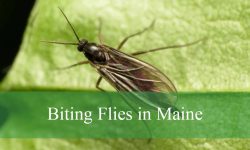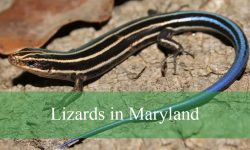Pink birds are some of the most striking and beautiful species found across North America, especially in the United States. Their soft pastel hues and vibrant rosy shades make them stand out in marshes, wetlands, forests, and even suburban areas. From the iconic American flamingo to the elegant roseate spoonbill, these birds captivate birdwatchers and nature enthusiasts alike. Their pink coloration often comes from their diet, rich in carotenoid pigments found in shrimp and other aquatic organisms.
In this guide, we’ll explore 28 types of pink birds, highlighting their unique features, habitats, and identification tips. Whether you’re spotting a bright pink finch in your backyard or observing a flock of spoonbills wading through shallow waters, each species offers a fascinating glimpse into the diversity of North America’s avian life. Keep reading to discover some of the most breathtaking pink birds and learn what makes them so special in the wild.
Different Types of Pink Birds
Pink Robin
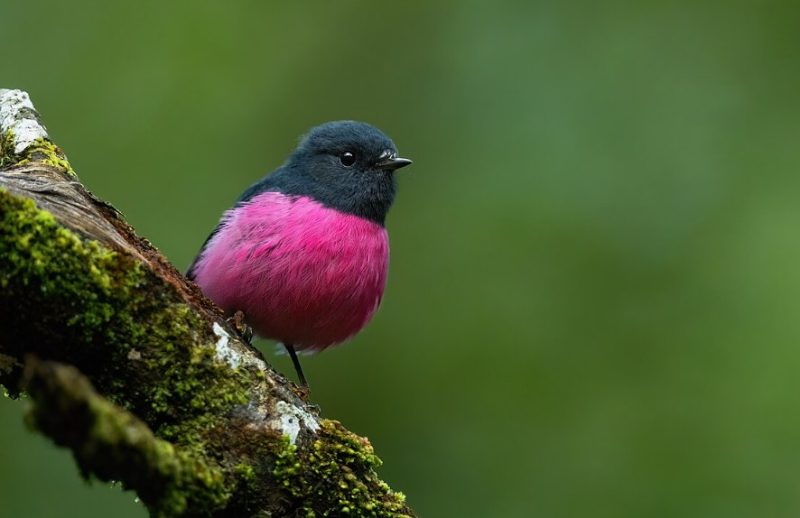
The Pink Robin is a small and enchanting songbird recognized for its vivid coloration and elusive nature. Males boast a striking pink breast and underparts, contrasted by a dark gray or black upper body, creating a dramatic yet beautiful appearance. Females and juveniles have a more subdued grayish-brown coloration with subtle hints of pink.
Endemic to Australia, Pink Robins prefer dense, forested habitats such as temperate rainforests and woodlands. They are insectivores, primarily feeding on spiders, beetles, and other small invertebrates found within leaf litter. Their preference for thick vegetation often makes them difficult to spot, but their delicate songs reveal their presence in the wild.
Cassin’s Finch
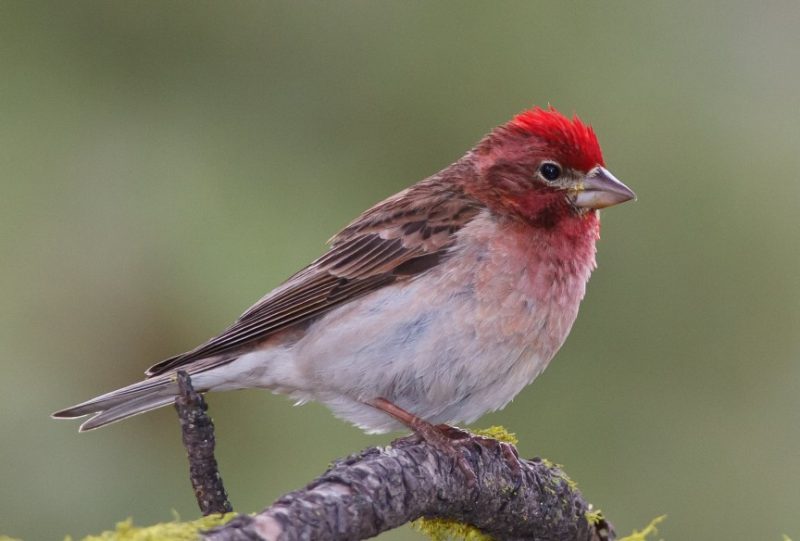
The Cassin’s Finch is a delightful songbird, admired for its striking hues and melodious calls. Males exhibit a distinctive rosy-pink crown, breast, and rump, harmonizing with their brownish-gray wings and back. In contrast, females boast a more understated appearance, with brown-and-white streaked plumage and grayish legs.
These finches thrive in the mountainous regions of western North America, including the Rocky Mountains and the Sierra Nevada. They favor coniferous forests with an abundance of pine, spruce, and fir trees, where they forage for seeds from cones and flowering plants. Their diet mainly consists of conifer and deciduous seeds, supplementing with occasional fruits and insects.
American Flamingo
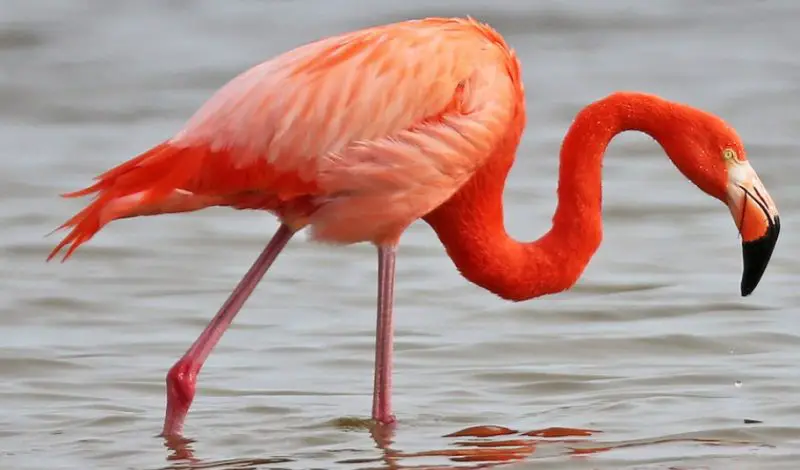
The American Flamingo stands out with its radiant pink, crimson, and white feathers, which intensify in color during the breeding season. Its long, sinuous neck and gracefully curved bill lend it a distinctive silhouette. These social birds prefer the company of large flocks, often numbering in the thousands, engaging in synchronized movements while foraging.
They employ a specialized filter-feeding technique, using their uniquely structured bill to sift through shallow waters for algae, tiny crustaceans, and mollusks. These elegant birds inhabit coastal lagoons, salt pans, and mangrove swamps across the Caribbean, the Gulf of Mexico, and northern parts of South America.
Purple Finch
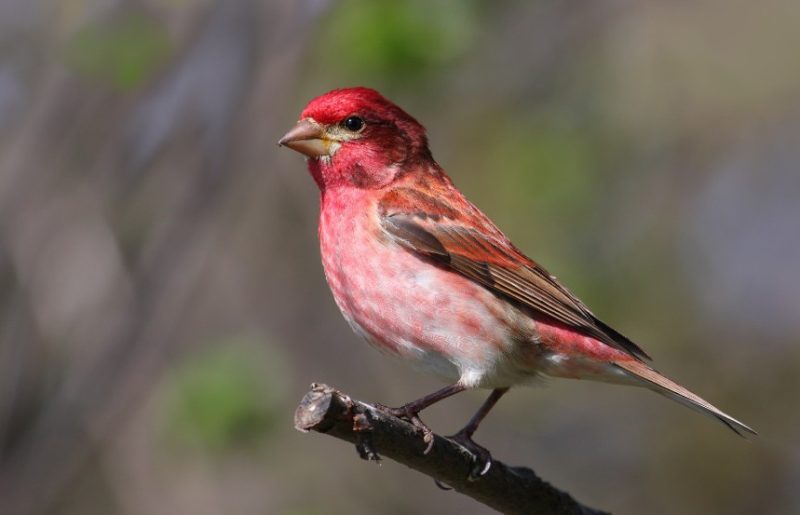
The Purple Finch is an eye-catching bird known for its rich coloration and charming song. Males exhibit a bold blend of raspberry-red and pink across their head, breast, and back, transitioning to brown on their wings and tail. Females, however, sport a more muted brown plumage with fine streaking.
These adaptable birds can be found in coniferous forests, mixed woodlands, and suburban gardens throughout Canada and the United States. They primarily feed on seeds and berries, often frequenting bird feeders to feast on sunflower seeds and other available treats.
Roseate Spoonbill
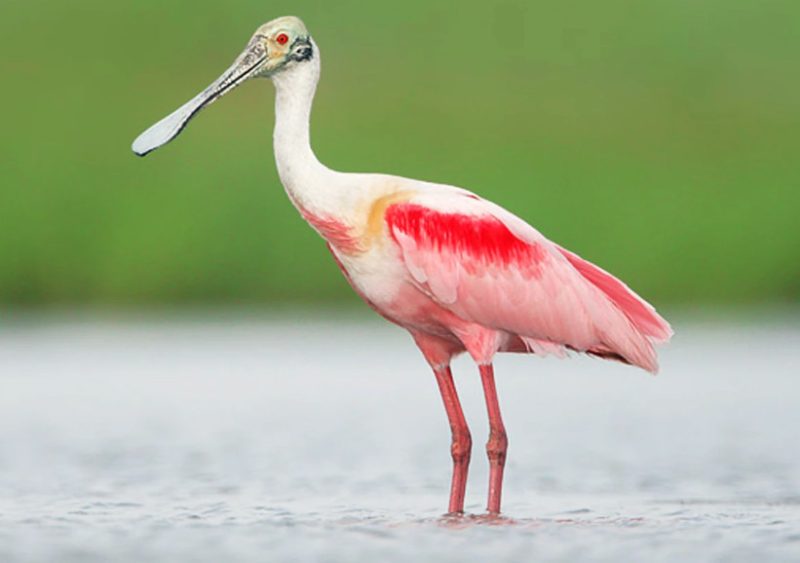
The Roseate Spoonbill is a breathtaking bird, instantly recognizable by its pink plumage, white upper body, and distinctive spoon-shaped bill. This unique beak is an essential tool for its feeding habits, allowing it to sift through water to catch fish, crustaceans, and aquatic insects.
These striking birds inhabit marshes, estuaries, and mangrove swamps in the southeastern United States, particularly Florida, Louisiana, and Texas. They are also widespread in Central and South America, favoring shallow wetlands where they can wade and forage efficiently.
Scarlet Ibis
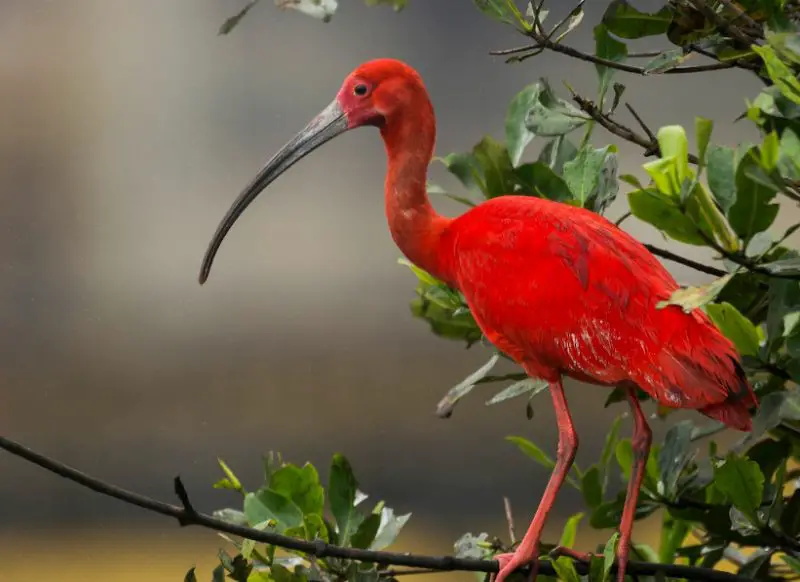
The Scarlet Ibis is an extraordinary bird famed for its fiery red plumage and elegant form. Its vivid coloration, derived from carotenoid-rich crustaceans in its diet, is complemented by a gracefully curved, bright red bill. Black-tipped wings provide an exquisite contrast, enhancing its striking appearance.
Native to South America and the Caribbean, these birds favor mangroves, swamps, and coastal lagoons where they forage for small fish, insects, and crustaceans. Highly social, Scarlet Ibises travel in flocks, often engaging in coordinated flights and communal roosting, adding to their mesmerizing presence in wetland landscapes.
House Finch
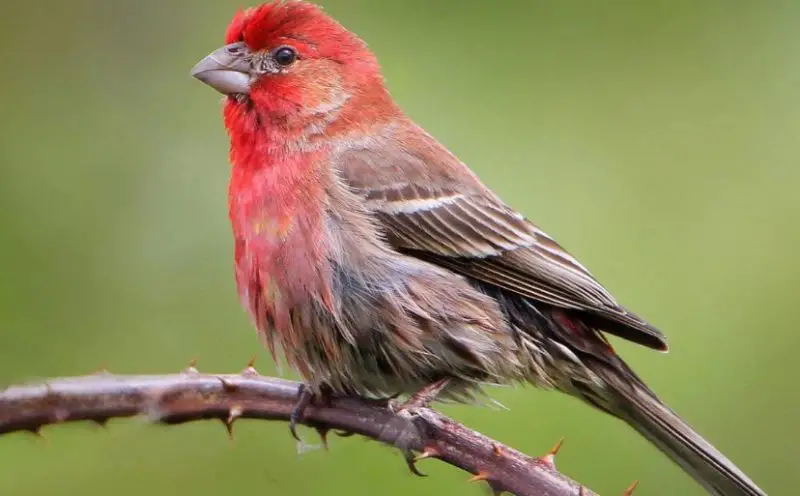
The House Finch is a charming songbird recognized for its adaptability and cheerful melodies. Males are adorned with reddish-pink hues on their head, breast, and rump, contrasting with their brown-streaked wings and back. Females, on the other hand, display a more subdued brown plumage, aiding in their camouflage.
Originally native to the western regions of North America, House Finches have expanded their range across most of the United States, as well as parts of Canada and Mexico. They thrive in diverse environments, from woodlands and deserts to suburban gardens. Their diet consists of seeds, fruits, berries, and insects, making them frequent visitors at backyard feeders.
Black Rosy-Finch
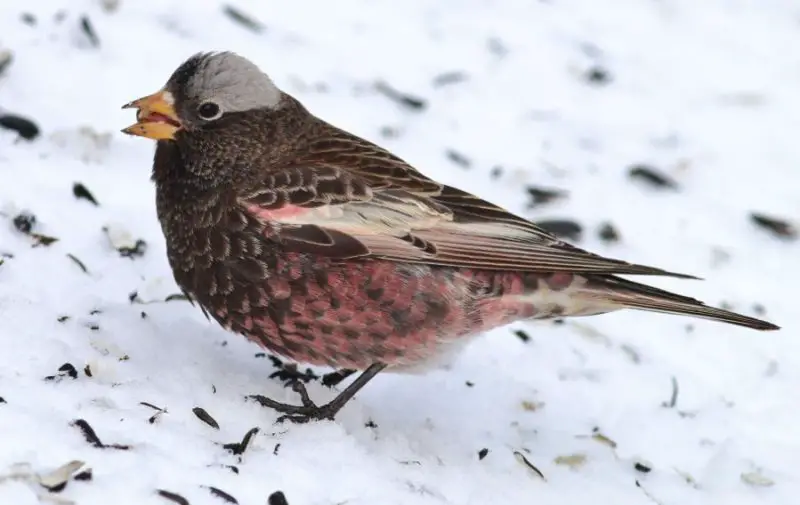
The Black Rosy-Finch is a striking bird well-adapted to high-altitude environments. Males are easily identified by their dark plumage, accented with soft pink hues on their forehead, breast, and rump. Females and juveniles have a more muted, grayish-brown appearance, providing excellent camouflage against rocky terrain.
These birds inhabit the rugged alpine and subalpine regions of western North America, thriving in rocky slopes, high meadows, and mountain forests. Adapted to harsh climates, they endure extreme weather conditions while foraging for seeds, insects, and small invertebrates. Their stout bills allow them to efficiently crack open seeds, making up the majority of their diet.
Pine Grosbeak
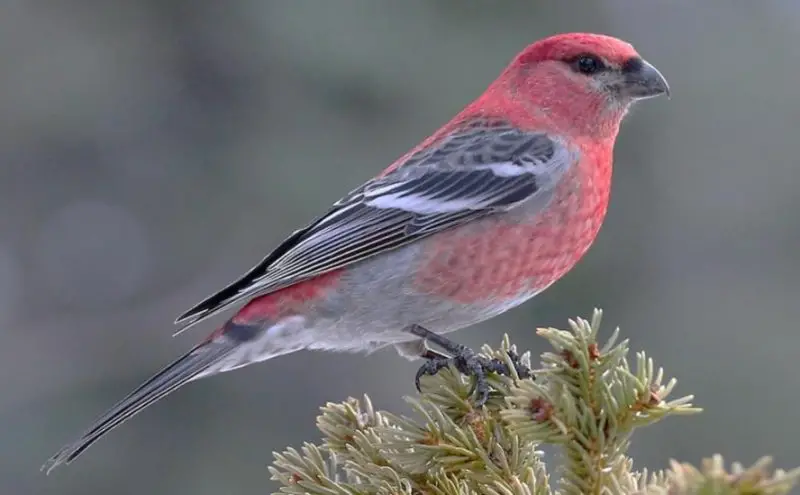
The Pine Grosbeak is a large, robust songbird known for its vibrant coloration and gentle demeanor. Males feature a brilliant pinkish-red plumage, while females and juveniles exhibit a mix of olive-gray and brown tones. Their thick, conical bills are perfectly designed for cracking seeds and consuming fruits.
These birds are commonly found in coniferous forests across Canada and the northern United States, where they depend on spruce, pine, and fir trees for food and nesting. They primarily feed on seeds, berries, and buds, often descending from higher elevations during winter in search of accessible food sources.
Common Redpoll
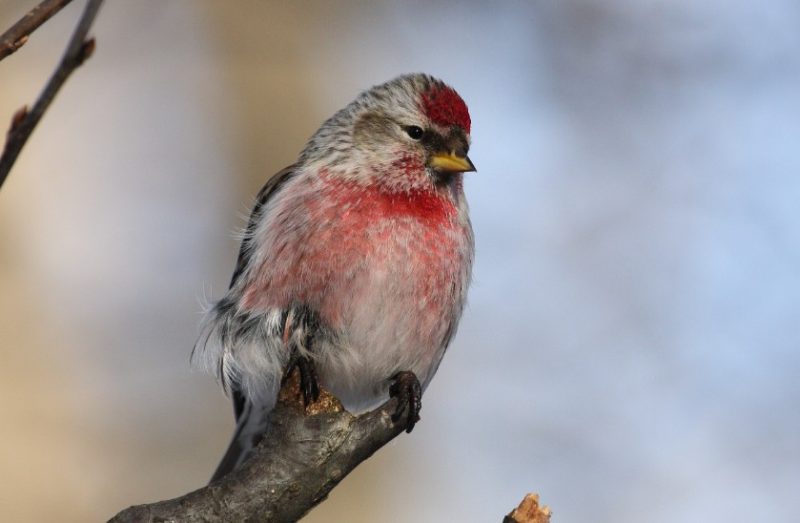
The Common Redpoll is a small, energetic finch that thrives in cold northern regions. Males showcase a distinctive red cap and pink wash on their chest, complemented by streaked brown and white plumage. Females and juveniles possess a similar pattern but lack the rosy chest coloration.
These birds are found throughout the Arctic and boreal forests of North America, Europe, and Asia. Their diet consists mainly of seeds, particularly those from birch and alder trees, and they are frequent visitors to backyard feeders. Their specialized bill allows them to efficiently extract seeds, and they are known for their remarkable ability to withstand frigid temperatures.
White-winged Crossbill
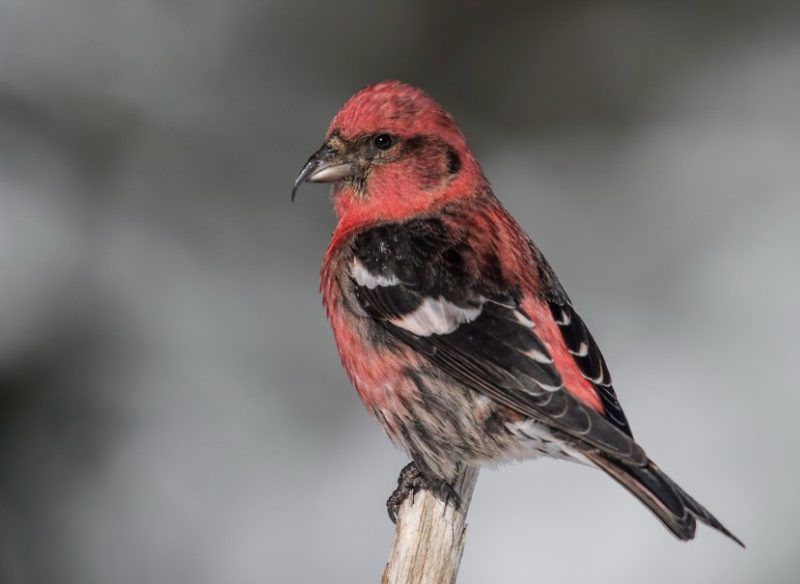
The White-winged Crossbill is an extraordinary bird recognized for its unique crossed bill, designed specifically for extracting seeds from conifer cones. Males display a striking red or pinkish hue, while females and juveniles are adorned with brown or greenish tones. Their white wing bars stand out against their plumage, adding to their distinctive appearance.
These birds are primarily found in boreal forests across North America, from Alaska and Canada to the northern United States. Their diet is heavily reliant on conifer seeds, which they skillfully pry open using their specialized bill. White-winged Crossbills are known for their nomadic nature, traveling in search of abundant cone crops to sustain their feeding habits.
Gray-crowned Rosy Finch
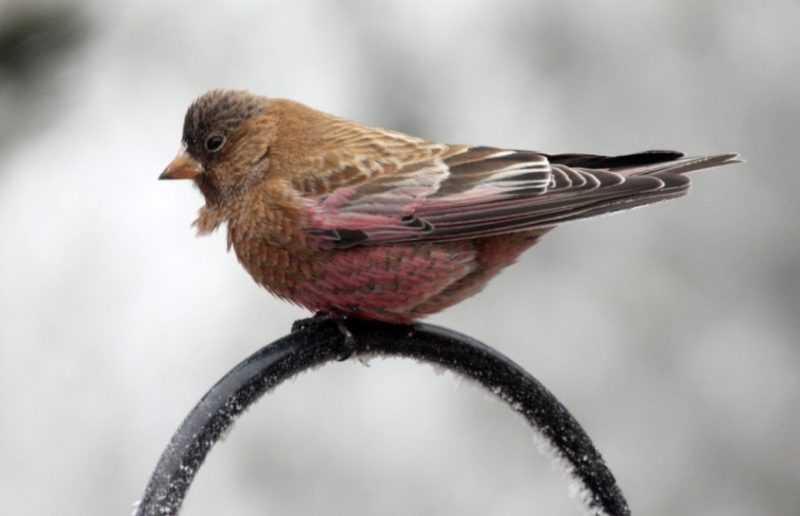
The Gray-crowned Rosy Finch is a striking bird known for its high-altitude habitat and unique coloration. Males feature a rosy-pink wash on their breast and rump, contrasted by a gray-crowned head and brownish back. Females and juveniles exhibit a more muted blend of gray and brown, providing excellent camouflage in rocky terrains.
These finches are native to the mountainous regions of western North America, including the Rocky Mountains and the Sierra Nevada. They thrive in alpine environments, favoring rocky slopes, talus fields, and snow-covered landscapes. Their diet consists primarily of seeds, insects, and berries, and they are known to visit feeders in lower elevations during winter.
Bourke’s Parakeet
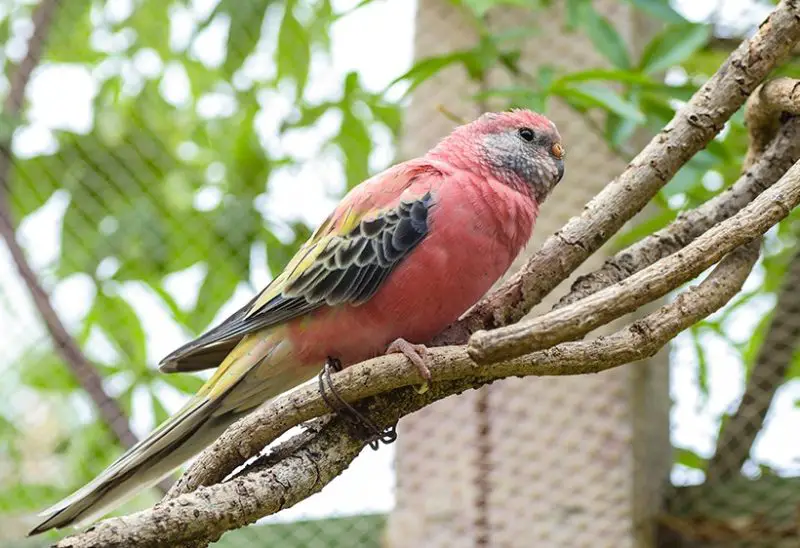
Bourke’s Parakeet, also called the Bourke’s Parrot, is a small, gentle bird admired for its soft pastel hues and calm temperament. These parakeets display a delicate blend of pink, peach, and grayish-blue feathers, with variations in shading among individuals.
Native to Australia’s arid and semi-arid regions, they inhabit open woodlands, scrublands, and grasslands, where they blend seamlessly into their surroundings. Unlike many parrot species, Bourke’s Parakeets are ground feeders, foraging for seeds, grasses, and small insects. Their adaptability to dry conditions allows them to survive with minimal water sources.
Anna’s Hummingbird
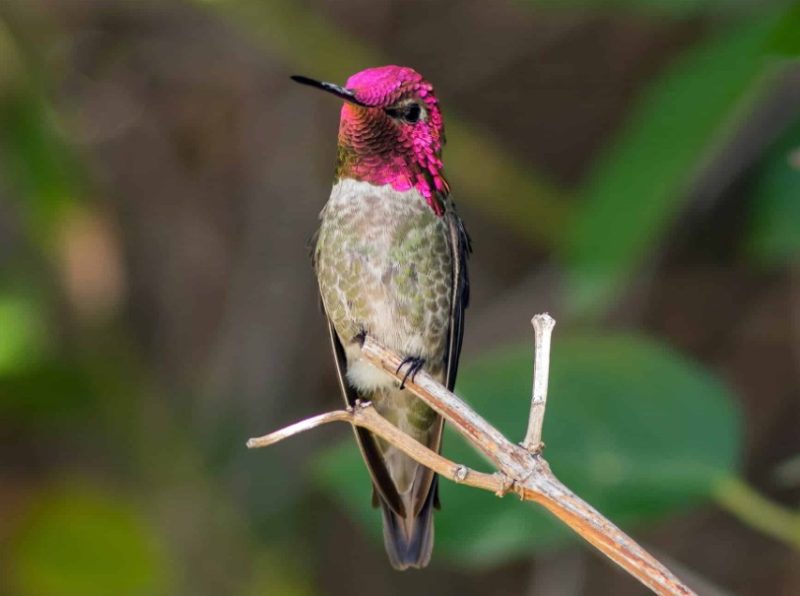
Anna’s Hummingbird is a dazzling species known for its brilliant iridescent feathers and remarkable aerial agility. Males are especially vibrant, with shimmering emerald-green plumage and a rose-red crown and throat. Females, though less flashy, still possess elegant green and gray tones.
Endemic to the western coast of North America, these hummingbirds thrive from southern British Columbia to Baja California. They inhabit diverse environments, including woodlands, gardens, and urban areas, often visiting backyard feeders. Their diet primarily consists of nectar from flowers, supplemented by small insects and spiders. Anna’s Hummingbirds are known for their ability to hover and even fly backward, showcasing incredible flight precision.
Rose-breasted Cockatoo
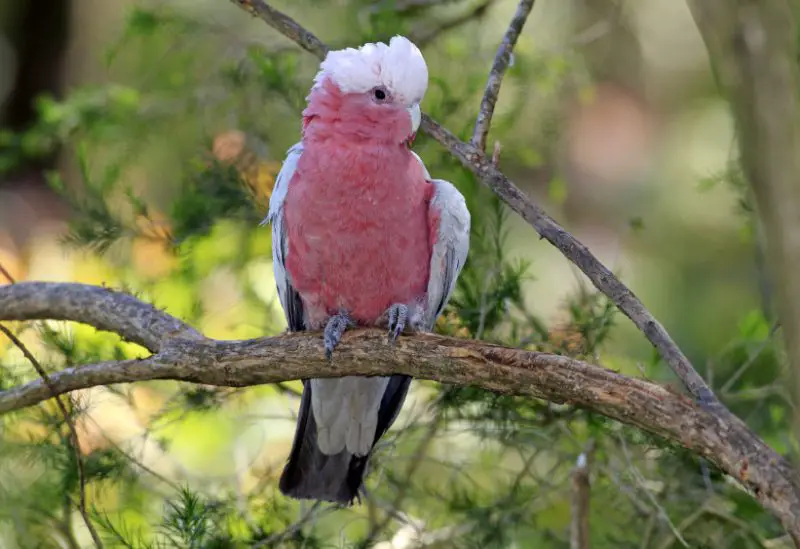
The Rose-breasted Cockatoo, commonly known as the Galah, is a charismatic and highly intelligent parrot species. These birds display a stunning combination of a rosy-pink chest and face, set against a soft gray back and wings. Their expressive crests add to their charm, rising and lowering depending on their mood.
Native to Australia, Galahs are found in a variety of habitats, including woodlands, grasslands, and even urban parks. They are highly social birds, often forming large, noisy flocks that forage for seeds, fruits, and vegetation. With a strong, curved bill, they are adept at cracking open hard seeds, making them well-suited to their environment.
Pink-headed Fruit Dove
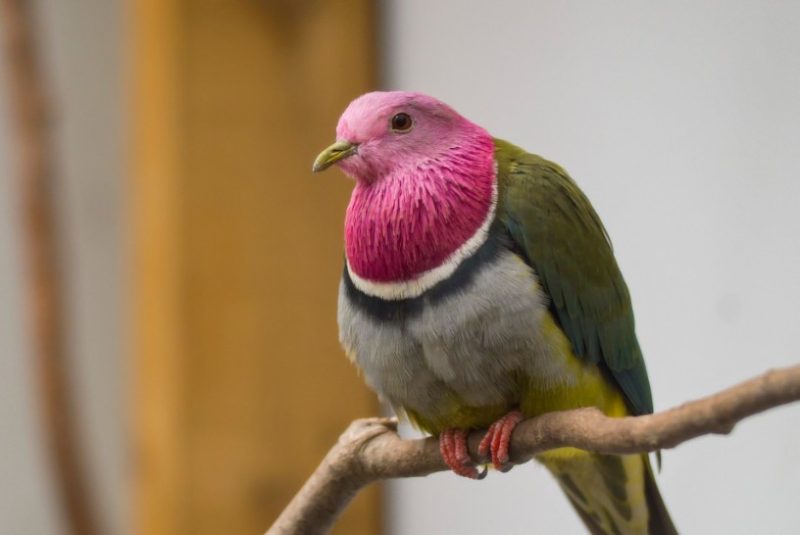
The Pink-headed Fruit Dove, also known as Temminck’s Fruit Dove, is a stunning bird celebrated for its vibrant plumage and fruit-based diet. This species features a bright pink head, a distinctive black and white band across its chest, and lush green feathers covering its back and wings.
Native to Southeast Asia and Indonesia, these doves thrive in tropical and subtropical forests, where they perch high in the canopy and blend seamlessly with their surroundings. Their diet consists primarily of fruits and berries, playing a crucial role in seed dispersal within their ecosystem.
Pink-headed Warbler
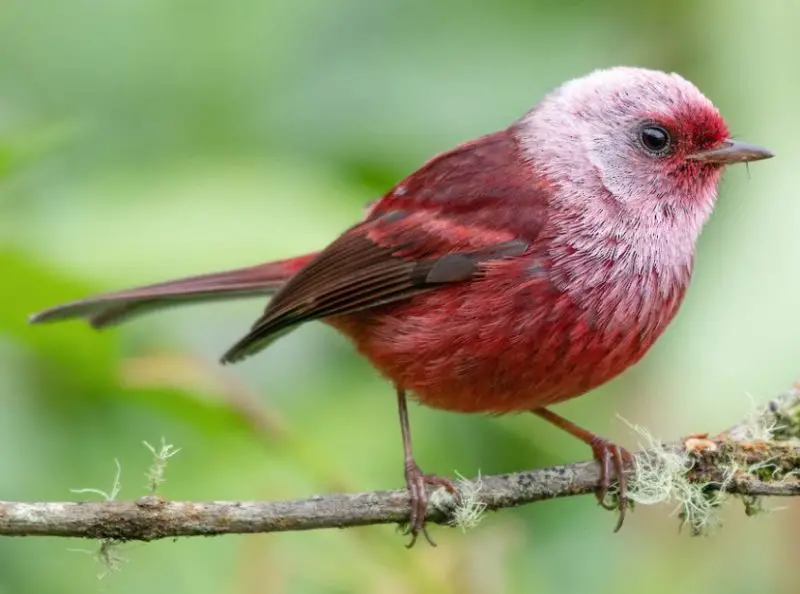
The Pink-headed Warbler is a visually striking bird, distinguished by its bold pink head and chest, which contrast sharply against its dark wings and back. While males exhibit the most vibrant hues, females and juveniles display a slightly more subdued coloration.
This warbler is native to the high-altitude cloud and pine-oak forests of southern Mexico and Guatemala, where it thrives at elevations ranging from 1,800 to 3,200 meters. As an insectivorous species, it primarily feeds on insects and spiders found within the dense foliage of its mountainous habitat.
Himalayan White-browed Rosefinch
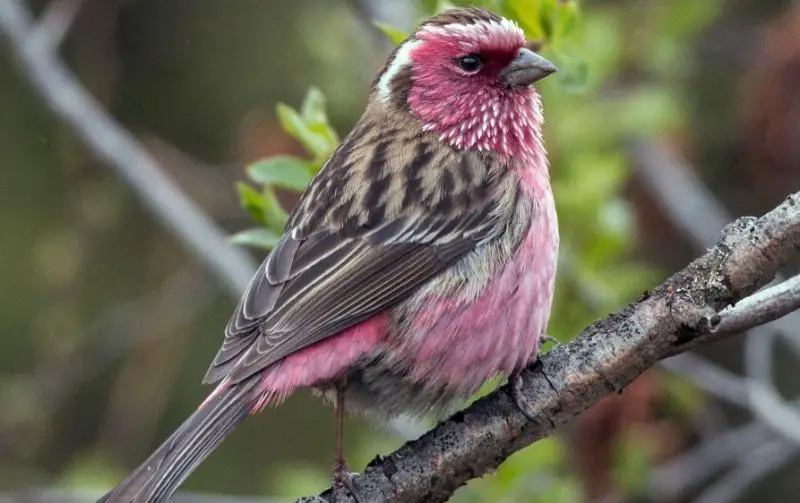
The Himalayan White-browed Rosefinch is a breathtaking bird recognized for its striking pink plumage and resilience in high-altitude environments. Males boast a deep pink hue across their breast, flanks, and rump, complemented by a white forehead and eyebrow. Females and juveniles, by contrast, feature a more muted brownish-gray coloration.
Endemic to the Himalayan mountain range, this rosefinch inhabits rocky slopes, alpine meadows, and shrubby landscapes across regions from eastern Afghanistan and northern Pakistan to Nepal, Bhutan, and northeastern India. Their diet primarily consists of seeds, berries, and small plant materials, which they forage from the ground or low vegetation.
Major Mitchell’s Cockatoo
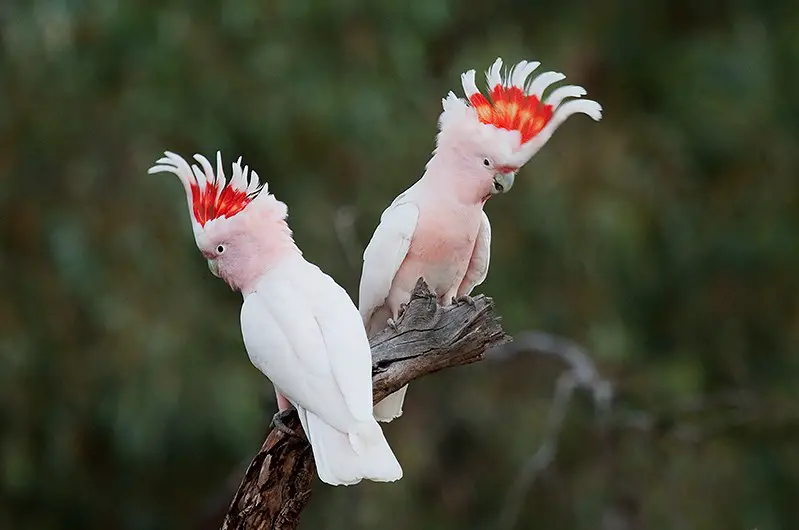
The Major Mitchell’s Cockatoo, also known as Leadbeater’s Cockatoo, is a captivating parrot species admired for its unique coloration and playful personality. These birds display a soft pink body with a stunning crest of white feathers accented with salmon, yellow, and red highlights.
Native to Australia’s arid and semi-arid regions, these cockatoos are found in open woodlands, grasslands, and along watercourses. They are skilled foragers, primarily feeding on seeds, nuts, fruits, and blossoms, using their strong beaks to crack open hard seed shells with ease.
Moluccan Cockatoo
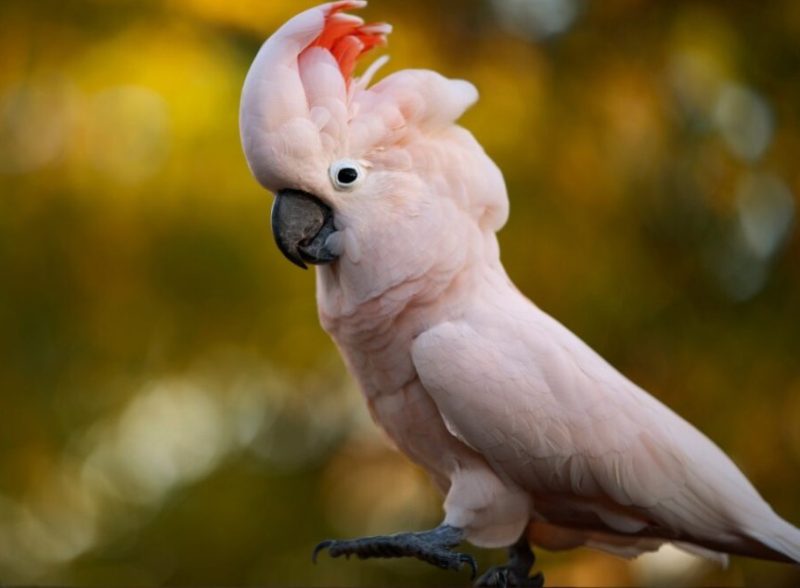
The Moluccan Cockatoo, or Salmon-crested Cockatoo, is a magnificent bird known for its bold personality and striking pinkish-salmon plumage. One of its most distinctive features is its large, expressive crest, which it raises when excited or alarmed.
Native to the Moluccan Islands of Indonesia, these cockatoos inhabit tropical rainforests and lowland environments. Their diet consists of seeds, nuts, fruits, and berries, and their powerful beaks allow them to break open tough shells to access food. Moluccan Cockatoos are highly intelligent and social birds, often forming strong bonds with their mates and human caregivers alike.
African Spoonbill
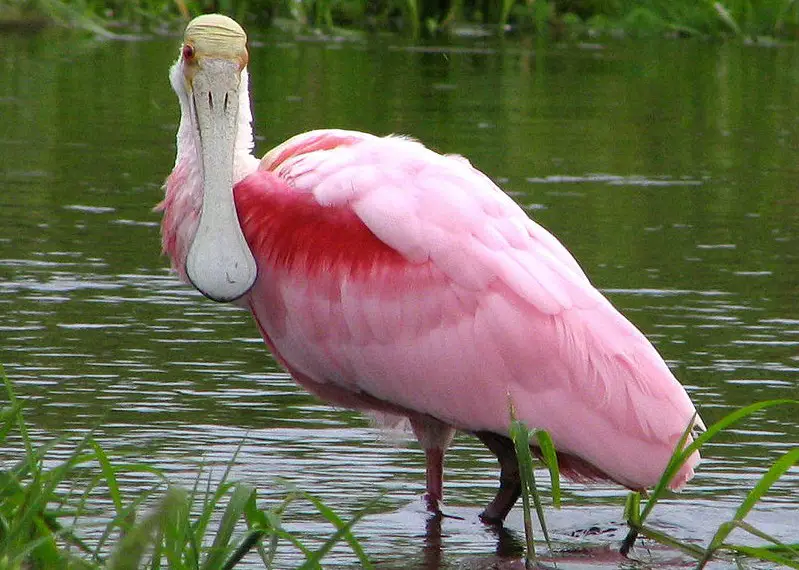
The African Spoonbill is an elegant wading bird found across various wetland habitats in Africa. It is easily recognized by its long legs, slender body, and distinctive spoon-shaped bill, which it uses to sweep through shallow water in search of food.
Draped in pure white plumage, this bird exhibits striking pink hues on its face and legs during the breeding season. African Spoonbills inhabit freshwater and saline wetlands, including lakes, rivers, swamps, and coastal marshes. Their diet consists of small fish, crustaceans, insects, and amphibians.
Greater Flamingo
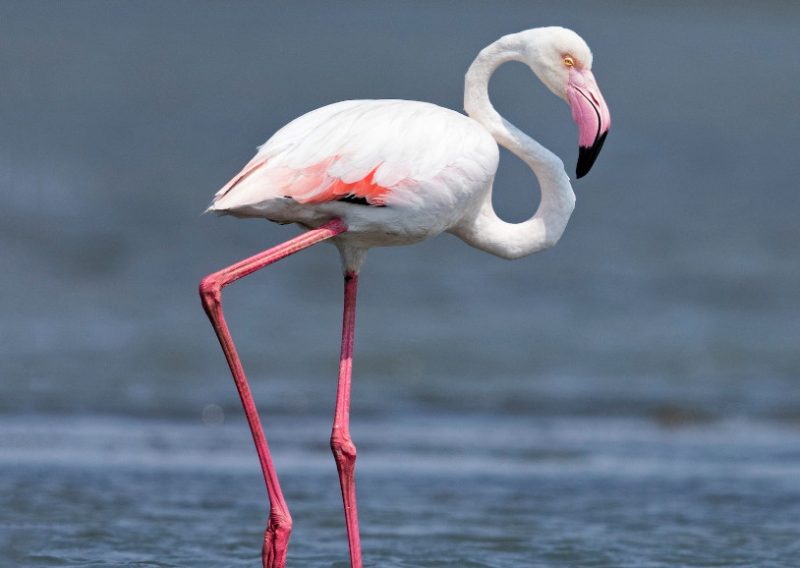
The Greater Flamingo is an iconic wading bird known for its graceful appearance and pale pink plumage. Found across Africa, Europe, Asia, and the Americas, these birds inhabit salt flats, estuaries, lagoons, and shallow coastal waters.
Distinguished by their long, curved necks and specialized downward-bending bills, Greater Flamingos are filter feeders. They consume algae, crustaceans, and small aquatic organisms, which contribute to their signature pink coloration due to the carotenoid pigments in their diet.
Southern Carmine Bee-eater
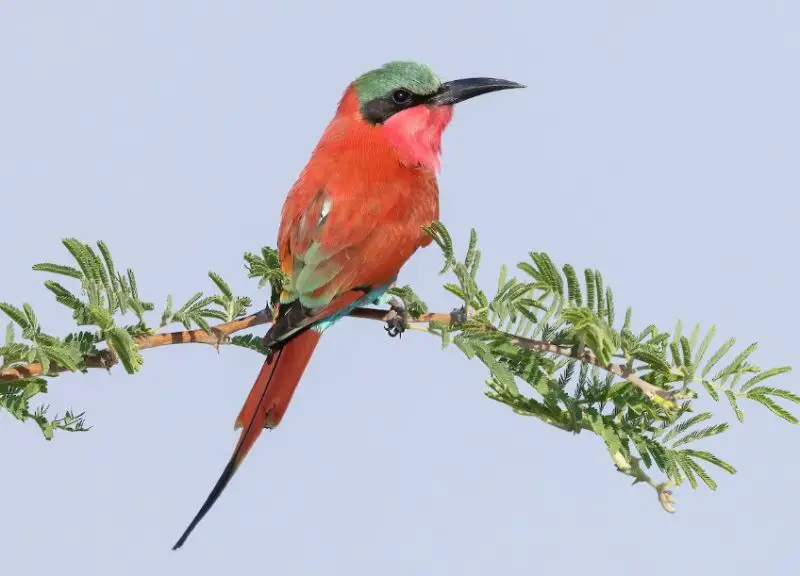
The Southern Carmine Bee-eater is a striking bird admired for its vibrant carmine-red plumage, greenish-blue back, and elongated tail feathers. Its slender, curved bill is perfectly adapted for catching flying insects mid-air.
Endemic to sub-Saharan Africa, this species thrives in open woodlands, riverbanks, and savannas. These bee-eaters often perch on branches or even ride on the backs of large animals to spot prey before executing precise aerial maneuvers to catch bees, wasps, and other flying insects.
Northern Carmine Bee-eater
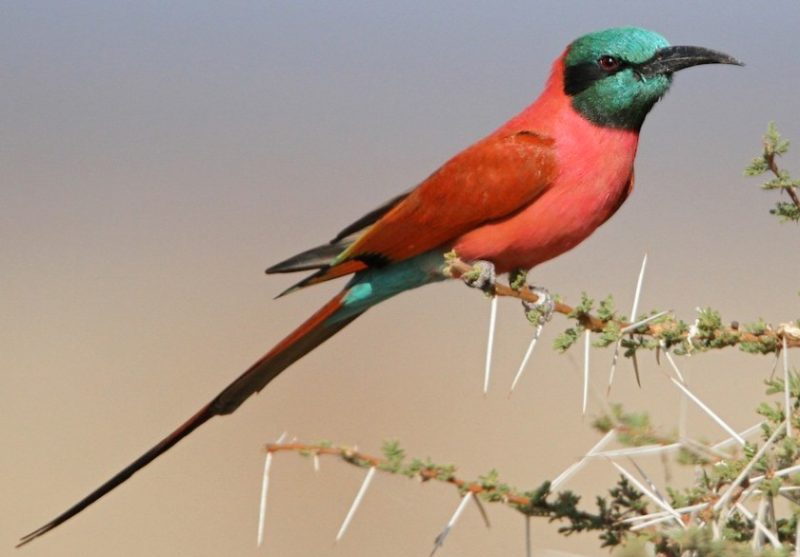
The Northern Carmine Bee-eater closely resembles its southern counterpart, boasting a vivid pinkish-red breast and a green throat. Found across northern tropical Africa, from Senegal to Ethiopia and Kenya, this species inhabits similar open landscapes, including riverbanks and savannas.
Notably, Northern Carmine Bee-eaters exhibit unique hunting behaviors, frequently perching on large animals such as elephants and donkeys or even riding on big birds like the Abyssinian Ground Hornbill to catch insects disturbed by movement.
Brown-capped Rosy-Finch
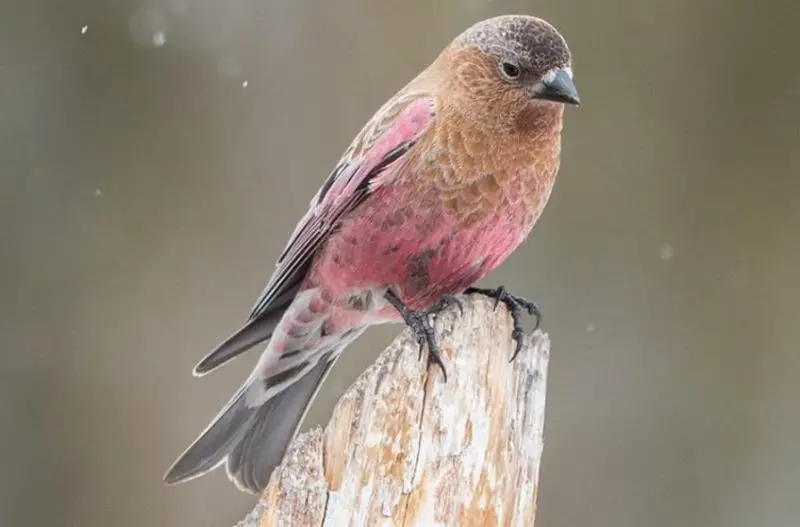
The Brown-capped Rosy-Finch is a hardy bird adapted to the rugged alpine environments of North America, particularly in Colorado. Males are easily identified by their rich brown upperparts, dark cap, and rosy-pink underparts and wing edges, while females display a duller, more muted version of the same coloration.
This species thrives in high-altitude mountain meadows, rocky slopes, and snow-covered landscapes. Their diet primarily consists of seeds from grasses and weeds, though they also consume insects during the warmer months. Brown-capped Rosy-Finches are known to descend to lower elevations in winter, occasionally visiting bird feeders.

